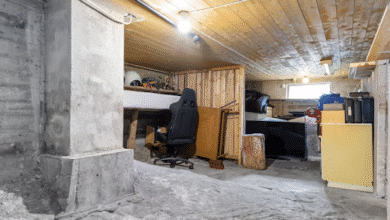Everything You Need To Know About Svart Aronia

Svart Aronia is widely popular as Black chokeberry or Aronia Melanocarpa among the people. They are natural sources of polyphenols and anthocyanins among plants and are the most suitable raw materials for the production of functional foods. Chokeberries are popular not only from their nutritional value but also from the steady stream of research pointing to their health-promoting effects.
Aronia Svart Care Tips
The shrub has a high degree of adaptability and is hardy. Because of the shrub’s adaptability, it can flourish in both moist and dry environments. It will grow in both acidic and alkaline soil that’s pH is in the appropriate range, but it will thrive best in acidic soil. Although it prefers soils with good drainage, it is also capable of surviving in boggy soils.
The plant’s ability to tolerate boggy soil makes it an excellent choice for wet areas where many other plants refuse to grow. In addition, it tends to spread readily in the landscape since black chokeberry is tolerant of so many different growing conditions.
However, It is important to monitor and remove suckers around the base of the plant to allow new plants to grow; otherwise, you could end up with a thicket of shrubs.
Besides that, this Aronia häck requires very little maintenance, as it will mostly be able to take care of itself. Aside from that, it does not have major problems with pests or diseases either. However, to maintain its shape, you will need to water the plant when there is a dry spell and prune it annually.
Light Requirement For Growth
The black chokeberry shrub can either be planted in full sun or partial shade, depending on your preference. However, you will achieve the best results in locations with lots of direct sunlight, i.e., at least six hours on most days. The shrub may fail to flower and fruit if it receives too much shade, and it will produce weak growth, which may eventually kill it.
Soil Type
This shrub has the virtue of adaptability to a wide variety of soil types. Neither sandy nor clay soils are a problem for this plant, though it prefers a soil in between. Additionally, it is able to handle some salt in the soil, making it an excellent choice for sites near roads that use road salt.
Water Requirement
Chokeberry is a moderately water-demanding plant. It can withstand both drought and flooding. If your shrub is experiencing a prolonged dry spell or when the weather is particularly hot, it is a good idea to water it.
Svart’s Temperature and Humidity
The black chokeberry is able to tolerate both cold and hot temperatures in its growing zone. This plant flowers late in the spring so that it does not suffer frost damage. However, if a late frost occurs, the blooms can be damaged and fruiting delayed for that growing season. If your area does experience frost when your shrub is in bloom, consider covering it with a sheet to protect it from the weather conditions. Furthermore, humidity does not pose a problem for the shrub as long as there is good air circulation around the foliage to prevent fungal diseases.
Fertilizer Needs
Unless your soil is deficient in nutrients, black chokeberries don’t require supplemental fertilization. However, you should plant your shrub and mix some compost into the soil to boost its growth. Additionally, you should apply compost every spring to maintain the healthy growth of the shrub.
Pruning Of Aronia Svart
The black chokeberry shrub does not require extensive pruning to prevent new shrubs from growing around the base of the shrub. So, pruning will not be a major chore. However, as soon as the plants have finished flowering in the spring, lightly prune the stems to shape the shrub to your liking. You should also remove any dead, damaged, or diseased parts of the shrub as you see them.
Uses Of Aronia Svart
Landscaping
Chokeberry is a deciduous, cold hardy shrub that does well in landscape plantings. It shows white flowers in the spring and colorful, red foliage throughout the summer and fall. This shrub has heavy, black fruit in the autumn.
Economic
You can cane Aronia berries whole or can also extract them to make jellies. People also use the berries for making healthful fruit drinks. There are high levels of anthocyanins (which give the juice its red color) and flavonoids in the juice. Europe is a popular growing region for this plant, where it can produce up to 38 pounds of fruit per bush.
Wildlife
Rabbits and white-tailed deer browse these plants. In addition, prairie chickens, ruffed grouse, and sharp-tailed grouse consume the fruit of the plant.
Management Of Aronia Svart
The control of invasive grasses and weeds is crucial. It is best to cultivate shallowly. You can also cultivate to stop the spread of suckers and shoots if that is a concern. According to some references, suckers frequently occur in the plant. There has been very little suckering on chokeberry in windbreaks on the Northern Plains. However, pruning older stems every few years is recommended.
Pests and Potential Problems In Svart
There are very few diseases and pest problems associated with black chokeberry. However, lack of sunlight and air circulation can cause mildew to grow on plants.
Final Words
Black chokeberries are deciduous shrubs belonging to the rose family that can grow to a height of three to twelve feet. The leaves are fine-toothed and medium green, with a raised gland along the midrib. This Aronia Svart plantation guide can help you grow it. Now that you know the basics, you can grow it.






